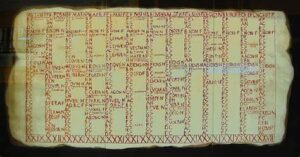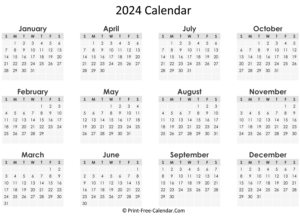
 As we move into the new year, we begin to think about how long the year seems…until we look at the year’s end speedily approaching. Then, we realize just how short the year really was, but what if there was a strange “time paradox” that disrupted the “space-time continuum” that we were told about in the movie, Back to the Future? Well, I don’t know if such a “time paradox” could really exist, but in the year 46BC, Julius Caesar did cause a type of disruption in the “space-time continuum” when he decided to revamp the human calendar. Of course, the days went on as usual, but the names of things and the way we looked at them changed. Now, for those of you who hate the whole biannual time change thing…well, this would really blow your body’s natural rhythms out of the water.
As we move into the new year, we begin to think about how long the year seems…until we look at the year’s end speedily approaching. Then, we realize just how short the year really was, but what if there was a strange “time paradox” that disrupted the “space-time continuum” that we were told about in the movie, Back to the Future? Well, I don’t know if such a “time paradox” could really exist, but in the year 46BC, Julius Caesar did cause a type of disruption in the “space-time continuum” when he decided to revamp the human calendar. Of course, the days went on as usual, but the names of things and the way we looked at them changed. Now, for those of you who hate the whole biannual time change thing…well, this would really blow your body’s natural rhythms out of the water.
It seems rather pretty egotistical to just randomly decide that you needed to change up a whole year, and then name the whole thing after yourself to boot, but the Julius Caesar truly thought of himself as a sort of god, I think. It’s not that the pre-Julian Roman calendar didn’t have its problems, because it did, and maybe Caesar thought he was doing a good thing. Still, in the end, the whole maneuver that occurred in the time frame progressing from 46BC to 45BC (note that until Jesus was born, the time was listed as BC, Before Christ and basically went backward. After his birth, time began to go forward, 1AD, 2AD, 3AD, etc. The term anno Domini is Medieval Latin and means “in the year of the Lord” or the year Christ was born.) caused a good bit of confusion…the kind of confusion that would make the time change seem totally insignificant.
The calendar the Romans used were not without fault. The Romans had to periodically add a leap month every few years to keep the calendar year in sync with the solar year. Unfortunately, they had missed a few with the chaos of the civil wars of the late republic. Now if you think the time change is odd, imagine having July suddenly be in the middle of winter in the northern hemisphere. That’s what was happening due to the missed additional leap months that were not happening. The calendar was obviously not well planned. So, to fix things, Caesar chose to take one year, and make a number of drastic changes designed to “get things back on track” once and for all. Nicknamed “the Year of the Consulship of Caesar and Lepidus” or the year of confusion, 46BC had two extra leap months inserted by Julius Caesar. This was in order to make his newly formed Julian Calendar match up with the seasonal year. In the end, 46BC was 445 days long and is the longest year in human history. Julius Caesar added Mercedonius (23 days) and two other intercalary months (33 and 34 days respectively) to the 355-day lunar year, to recalibrate the calendar in preparation for his calendar reform, which went into effect in 45 BC. Of course, the actual planetary orbit-year remained the same. He couldn’t change that. There were still problems with the calendar, but they probably weren’t quite as significant as the old Roman calendar, which required a manual reset of the year periodically.
The Julian Calendar would remain the standard in the western world for over 1600 years, until superseded by the Gregorian Calendar in 1582. The Gregorian calendar that is still widely used today. It is a solar calendar that was first introduced in 1582 by the Catholic Church and replaced the Julian calendar. The Gregorian 
 calendar is used for non-religious administration around the world and has been adopted by 168 countries as their official calendar. The principal change was to space leap years differently so as to make the average calendar year 365.2425 days long. For church functions, the church calendar is in place, and the Jewish people use the Hebrew calendar. I’m sure there are nations that use some other form of calendar, but the Gregorian calendar seems to keep the seasons aligned with the calendar pretty well.
calendar is used for non-religious administration around the world and has been adopted by 168 countries as their official calendar. The principal change was to space leap years differently so as to make the average calendar year 365.2425 days long. For church functions, the church calendar is in place, and the Jewish people use the Hebrew calendar. I’m sure there are nations that use some other form of calendar, but the Gregorian calendar seems to keep the seasons aligned with the calendar pretty well.


Leave a Reply